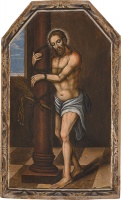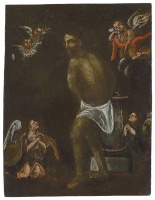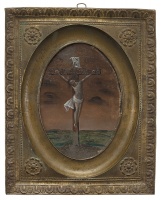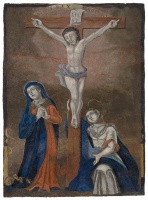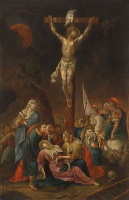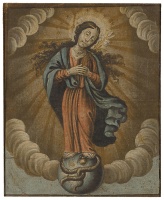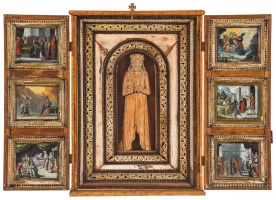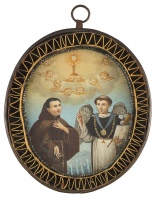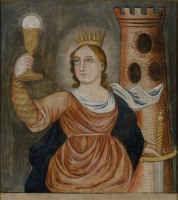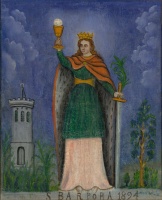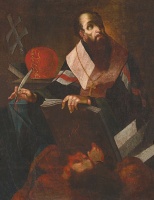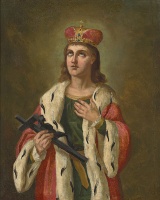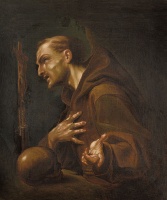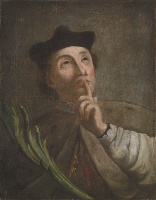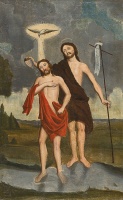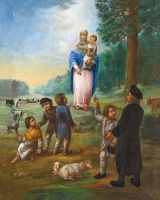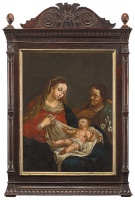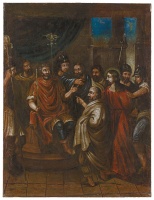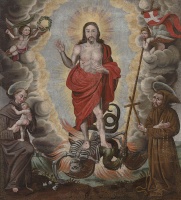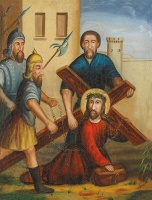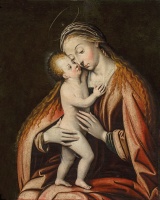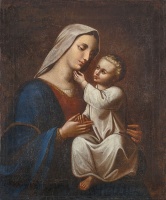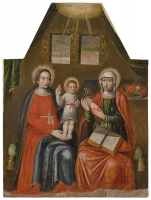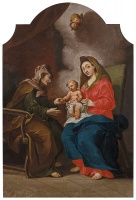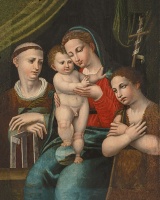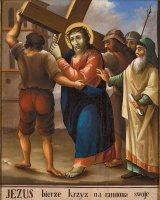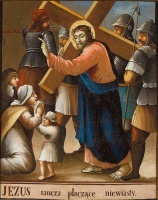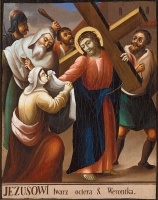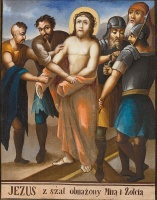
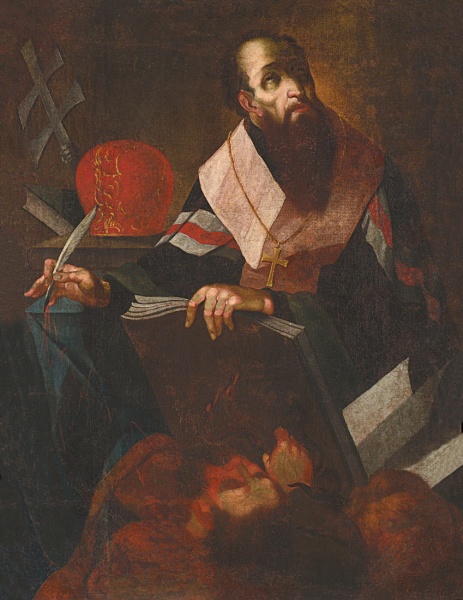

St Basil the Great
| Author: |
Unknown artist |
| Created: | second half of the 18th century |
| Material: | canvas |
| Technique: | oil |
| Dimensions: | 142 × 100 cm |
This competent Late Baroque painting has an impressive composition and a rare subject: it portrays St Basil the Great (ca 329–379), one of the Doctors of the Church, who is venerated in the Western and Eastern churches. Born in Cappadocia, into a family of Christian aristocrats, the young Basil travelled in Syria, Palestine, Mesopotamia and Egypt, where he learned about the lives of the first hermits, ascetics of the desert. On returning to Cappadocia, he distributed his fortune among the poor, and became a monk. He wrote about austerity and monastic life. His writings became the basis of the Basilian Regula, and were of immense importance in developing the monastic tradition in the Christian world. He used his writings and brilliant homilies to fight the spreading heresy of Arianism. When he was made Bishop of Caesarea, he lived in poverty, and directed all his efforts towards training priests, establishing hospices and hospitals, and helping the poor and disadvantaged. He took care of those in need, regardless of their faith. In this picture, St Basil is portrayed as an ascetic, with his bishop’s clothes and insignia nearby, as a theologian and fighter against heresy. The pen in his right hand fires murderous arrows at a fallen man who is holding snakes and symbolises defeated heresy. The origin of this painting, based on principles of Western art, might be associated with the Uniates, Catholics following the Greek Rite, who were active in Poland and Lithuania, and the Uniate Basilian Order.
Text author Dalia Vasiliūnienė
Source: Law firm Valiunas Ellex art album HEAVEN AND BEYOND (2016). Compiler Dalia Vasiliūnienė. Text authors Dalia Vasiliūnienė, Skaidrė UrbonienėExpositions: “Heaven and Beyond. Works of religious art from the collection of Rolandas Valiūnas and the law firm Valiunas Ellex“, 31 May–24 September 2016, Church Heritage Museum, Vilnius (curators Dalia Vasiliūnienė, Skaidrė Urbonienė)







